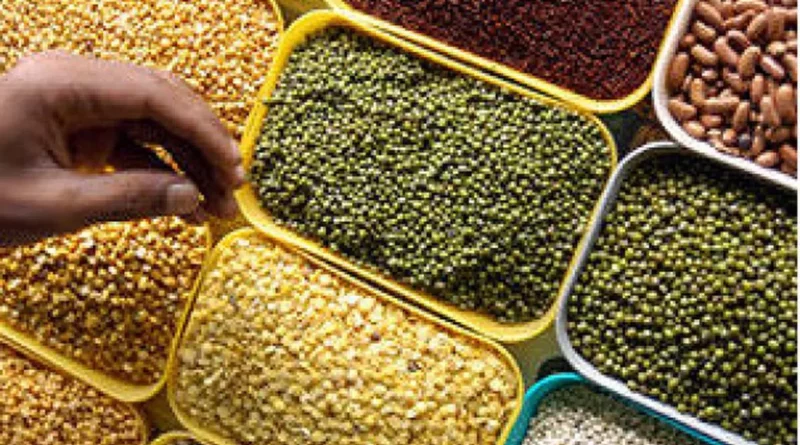Prices of pulses softening amid forecast of good rain
By Jitendra Choubey
Good rainfall has increased the sowing acreage of pulses, which has softened the price, especially of Urad dal.
According to the government, the wholesale prices of Urad have witnessed a week-on-week decline of 3.12% in Indore and 1.08% in Delhi markets, respectively. Moreover, in alignment with domestic prices, the landed prices of imported Urad are also on a declining trend. Urad pulses are mostly grown in Madhya Pradesh, Andhra Pradesh, UP, Rajasthan, Tamil Nadu, and Maharashtra.
Data shows that the overall pulses sowing acreage has sharply increased, anticipating good rainfall. By the end of June, India experienced a deficit of around -11% in rainfall since the monsoon set in on May 30. However, in 10 days, cumulative monsoon rainfall has reached normal levels.
The improvement in monsoon rainfall has started reflecting in the sharp increase in the sowing areas of pulses. There is a significant increase in pulses cultivation by over 50%, raising hopes to mitigate the pulses crisis that has led to higher prices. The country has been witnessing a shortfall in the production of pulses for the past two years, leading to an increase in domestic prices.
The pulses sowing area has increased by 55%, reaching 36.81 lakh hectares (LHa) from 23.78 LHa a year ago as of June 8. The Urad pulses sowing area increased by 46%, reaching 5.37 lakh hectares compared to 3.67 in the corresponding period last year. The 90-day crop is expected to experience a healthy Kharif production this year.
Market dynamics
The govt said it has taken various measures to balance market dynamics while supporting both farmers and consumers. Department of Consumer Affairs said a significant number of farmers are coming forward for pre-registration through government agencies such as NAFED to sell their crops timely.
This article has been republished from The New Indian Express

